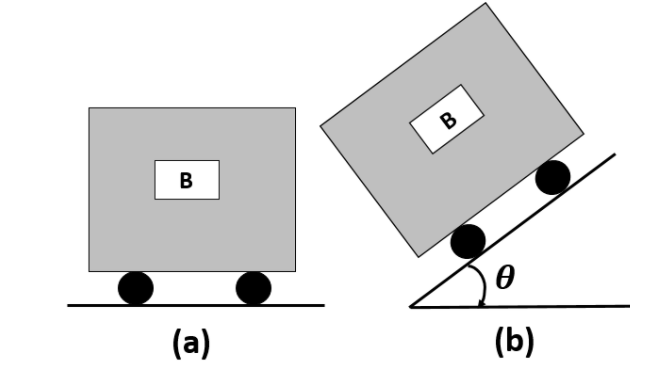Question
Question: A body B is capable of remaining stationary inside a liquid at the position shown in figure. If the ...
A body B is capable of remaining stationary inside a liquid at the position shown in figure. If the whole system is gently placed on smooth inclined plane as shown in figure (b) and is allowed to slide down, then (0<θ<90∘)

A. The body will move up (relative to the liquid).
B. The body will move down (relative to the liquid).
C. The body will remain stationary (relative to the liquid).
D. The body will move up for some inclination θ will move down for another inclination θ.
Solution
To solve this question, we will consider the body as stationary (in equilibrium), which means that the weight of the body is balanced by the buoyant force, which is the law of floatation. Then, to find the condition of the body when placed on an inclined plane, we will need to resolve the weight of the body into components and then find the net acceleration down the plane.
Formula used: FB=w
Where, FB is the buoyant force and w is the weight of the body.
Complete step by step answer:
We know that for a body to remain stationary in liquid, it must be in equilibrium condition. That means, its weight must be balanced with the upthrust/buoyant force provided by the liquid.
So, for the first case, where the body B remains stationary, we will have
FB=w

We must know that the buoyant force is given by the equation,
FB=ρlVbg
Where, ρl is the density of the liquid.
Vl is the volume of the submerged body.
And g is the acceleration due to gravity.
And, weight of the body, w is given by,
w=ρbVbg
Where, ρb is the density of the body.
Vb is the volume of the body.
And g is the acceleration due to gravity.
